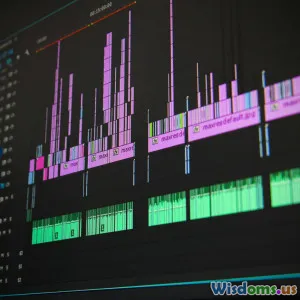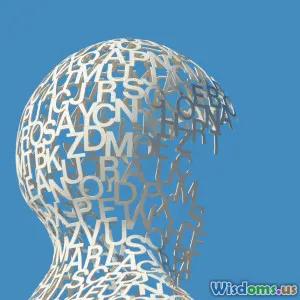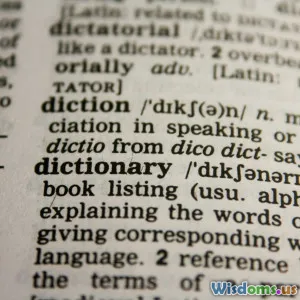
Why Machine Translation Still Gets Idioms Wrong
10 min read Explore why machine translation struggles with idioms and the linguistic challenges behind these errors. (0 Reviews)
Why Machine Translation Still Gets Idioms Wrong
Machine translation (MT) has transformed how we communicate across languages, breaking down barriers and enabling near-instantaneous access to global information. Yet, despite spectacular advances in artificial intelligence and natural language processing, one persistent challenge remains: idioms. Idiomatic expressions are often translated literally by MT systems, resulting in perplexing or nonsensical output. Why does this happen? And why are idioms such difficult hurdles for machines to overcome?
In this article, we will dive deep into the complexities of idioms that befuddle machine translation. We will explore linguistic nuances, cultural contexts, semantic subtlety, and technical limitations of current MT models, supported by concrete examples and expert insights. Our goal is to illuminate why idioms still get lost in translation — and how the future of MT might address this conundrum.
The Intricacies of Idioms
To understand why machines struggle, we must first grasp what idioms actually are and why they’re linguistically intricate.
What is an Idiom?
An idiom is a phrase or expression whose meaning doesn't align with the literal definitions of its individual words. For example, "kick the bucket" means "to die," not literally kicking a pail. This semantic opacity is what makes idioms unique and also notoriously challenging for language learners—and machines alike.
Idioms serve several key functions:
- Cultural flavor: They carry cultural references and social subtleties.
- Figurative meanings: They often convey metaphorical or symbolic ideas.
- Fixed expression: Idioms usually follow set patterns not modifiable without losing meaning.
Examples of Tricky Idioms
- English: "Break the ice" (to initiate social interaction)
- French: "Donner sa langue au chat" (literally “to give one’s tongue to the cat,” meaning “to give up guessing”)
- Chinese: "对牛弹琴" (duì niú tán qín — “play the lute to a cow”, meaning to address the wrong audience)
Without deep cultural and contextual knowledge, these cannot be translated literally without losing meaning.
Why Machine Translation Struggles with Idioms
1. Lack of Contextual Understanding
Idioms rely heavily on context. For instance, "hit the sack" could mean “go to bed” in a colloquial setting, while "hit the sack" in a boxing context might describe throwing punches. Machines often interpret phrases word-for-word if contextual markers are missing.
Current MT models, including advanced neural networks, analyze large text corpora to guess meaning based on probability but often lack deeper contextual comprehension involved in idiomatic usage.
Example
Google Translate sometimes translates "spill the beans" as losing legumes instead of revealing a secret.
2. Literal Translation Tendencies
Many MT engines default to literal translations influenced by training data. For example, the Spanish idiom "estar en las nubes" literally means "to be in the clouds," but idiomatically means “to be daydreaming.” A literal translation renders an incoherent phrase for the target reader.
Literal translations result from statistical or pattern-based methods that miss idiomatic phrases’ non-compositionality.
3. Lack of Cultural Awareness
Idioms are deeply embedded in cultural histories and reflect local customs, values, and humor. Because MT systems lack true cultural cognition, interpreting or substituting idioms appropriately is difficult.
For example, Japanese idioms often use culturally specific references, such as "猿も木から落ちる" (Saru mo ki kara ochiru — “Even monkeys fall from trees,” meaning “everyone makes mistakes”). A direct equivalent doesn’t always exist in target languages.
4. Dataset Limitations
AI relies on training datasets, typically large collections of aligned bilingual or multilingual texts. If idiomatic expressions are underrepresented, mislabelled, or absent in these corpora, models won’t learn idiom translations effectively.
Moreover, many idioms do not translate neatly, and parallel corpora often simplify or omit idiomatic complexity.
5. Ambiguity and Variants
Idioms often have variants, regional differences, or subtle connotations:
- "Hit the hay" vs. "Hit the sack" both mean “go to bed,” but their preference varies by locale.
- "Piece of cake" means something easy in English, but mapping this to an equivalent in another language requires nuanced cultural adaptation.
MT systems struggle with disambiguating variants without explicit guidance.
Cutting-edge Approaches to Idiomatic Translation
Despite these hurdles, research and development continue to improve idiom handling.
Neural Machine Translation (NMT) Advancements
Large-scale pre-trained models like transformer-based systems (e.g., GPT, BERT variants) utilize context in powerful ways to better infer meaning.
Recent studies show models fine-tuned specifically on idiomatic corpora can pick up some idioms’ figurative meanings, improving accuracy.
Incorporating Phrase Tables and Idiom Dictionaries
Hybrid systems combine statistical MT with curated phrase tables representing idioms and collocations. Such resources enable more direct substitution or rewriting.
For example, the European Parliament’s translation projects employ extensive phrase databases to maintain idiomatic integrity.
Context-Enriched Translation
Systems that analyze larger text windows—not just sentence-level but paragraph or document-level context—can better detect idiomatic uses.
This approach helps differentiate literal from idiomatic senses.
Multilingual and Cross-lingual Embeddings
Shared semantic spaces in multilingual embedding allow the system to learn idiomatic mappings across languages by semantic similarity rather than word alignment.
These models hold promise for capturing figurative equivalences.
Leveraging Human-in-the-Loop
Combining MT with human post-editing focuses on idiomatic content, which steadily improves datasets and system training.
Crowdsourcing examples of idiomatic contextual use also feed continuous improvement.
Real-World Implications
Improving idiomatic translation accuracy has enormous practical impact:
- Global Business: Contracts or marketing slogans containing idioms must convey correct meaning.
- Education: Language learners using MT need reliable idiomatic interpretations to grasp cultural nuance.
- Tourism & Social Media: Enhancing communication authenticity.
Machine mistranslations of idioms can cause confusion, miscommunication, or loss of meaning.
For example, a misunderstood idiomatic warning could cause safety issues.
Looking Forward: The Path Ahead
While current MT technologies have improved dramatically, the unique challenge of idioms calls for innovations integrating:
- Deeper semantic understanding and world knowledge.
- Better annotated multilingual idiom corpora.
- Hybrid human-AI approaches harnessing cultural and linguistic expertise.
Cross-disciplinary collaborations combining computational linguistics, anthropology, and AI research are key.
Idioms embody the poetic complexity of language, and teaching machines to 'get it' is a frontier blending science, culture, and art.
Conclusion
Idioms are the linguistic fingerprints of culture—colorful, enigmatic, and defiant of straightforward translation. Machine translation, with all its AI prowess, struggles with idioms because they require deep contextual, cultural, and semantic insight that goes beyond mere word mapping. Literal interpretations, cultural gaps, dataset insufficiencies, and ambiguous usages all confound MT systems.
Nevertheless, ongoing progress in neural architectures, curated datasets, and human collaboration promises gradual mastery of idiomatic subtleties. As AI systems evolve to better ‘understand’ the intangible world of idioms, global communication will grow more vibrant and authentic.
Understanding why MT fails at idioms doesn’t just illuminate technological limitations—it celebrates the rich tapestry of human language and the challenge of weaving it into artificial minds. The future is bright for idiomatic translation, but it requires patience, interdisciplinary effort, and unrelenting curiosity to bridge the gap between algorithms and idioms’ whimsical nature.
“Language is the house of Being.” — Martin Heidegger
Idioms build the rooms; it’s time machines learn the architecture.
Rate the Post
User Reviews
Other posts in Artificial Intelligence
Popular Posts


















